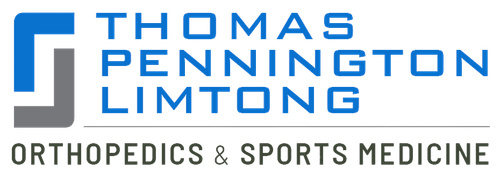 The most mobile joint in the body is the shoulder. The shoulder’s ability to turn in many directions enables a person to perform different tasks involving hands and arms. However, the flexibility and mobility of the shoulder also makes this joint vulnerable to dislocation. A dislocated shoulder can cause pain and cut down the functionality of the connected hand and arm.
The most mobile joint in the body is the shoulder. The shoulder’s ability to turn in many directions enables a person to perform different tasks involving hands and arms. However, the flexibility and mobility of the shoulder also makes this joint vulnerable to dislocation. A dislocated shoulder can cause pain and cut down the functionality of the connected hand and arm.
Dr. Steven Thomas and Dr. Gregory Bigler are board certified orthopedic surgeons providing a range of treatments for knees, shoulders, and other areas. They will treat the shoulder dislocation problem using advanced techniques and involving minimal time and discomfort for the patient. Dr. Thomas and Dr. Bigler provide these treatments to patients in Las Vegas, Nevada, and surrounding communities.
How does it occur?
A partial dislocation, clinically known as subluxation, will occur when the head of the humerus or the upper arm bone is partially out of the shoulder socket. A complete dislocation of the shoulder occurs when it is all the way out of the socket. Both partial and complete dislocation will make the shoulder unstable and cause pain and discomfort.
Dislocation of the shoulder joint can occur backward, forward or downward. A common type of shoulder dislocation is anterior instability when the shoulder slips forward. In this situation, the upper arm bone shifts forward and down out of its joint. It may occur when the arm is put in a throwing position.
Symptoms and Diagnosis
Some of the common symptoms in case of partial or complete shoulder dislocation are swelling, numbness, weakness and bruising in the shoulder joint. In some cases, the dislocation may cause a tear in the tendons or ligaments in the shoulder or damage the shoulder nerves.
The disruption in the shoulder joint may cause the muscles to have spasms, which will increase the pain. If the shoulder dislocates time and again, it will be diagnosed as shoulder instability. The surgeon will examine the shoulder and may order an x-ray. The surgeon should know how the dislocated occurred and whether the patient has previously had a shoulder dislocation.
Treatment and Rehabilitation
The surgeon will perform a process called closed reduction to restore the shoulder in its correct position. In this process, the ball of the humerus or the upper arm bone will be placed back into the joint socket. Once the shoulder joint is back in its position, severe pain will stop almost immediately.
As part of rehabilitation, the surgeon may immobilize the shoulder in a sling or another device for a few weeks after the treatment. The patient will require adequate rest, and should ice the sore area three to four times a day. Once the swelling and pain subsides, the surgeon or a physiotherapist will prescribe rehabilitation exercises.
These exercises are designed to help restore the range of motion of the shoulder and strengthen shoulder muscles. Stellar rehabilitation will help prevent future shoulder dislocations. The exercises will initially focus on gentle muscle toning, and gradually weight training exercises will be added. Board certified orthopedic surgeons Dr. Thomas and Dr. Bigler receive patients from Las Vegas, Nevada for shoulder dislocation treatments.
If you would like to schedule an appointment or learn more about the Knee and Shoulder Institute procedures & treatments performed by Las Vegas, Nevada board certified surgeons Steven C. Thomas, MD and Gregory T. Bigler, MD. call (702) 933-9393; Physical Therapy (702) 933-9394
